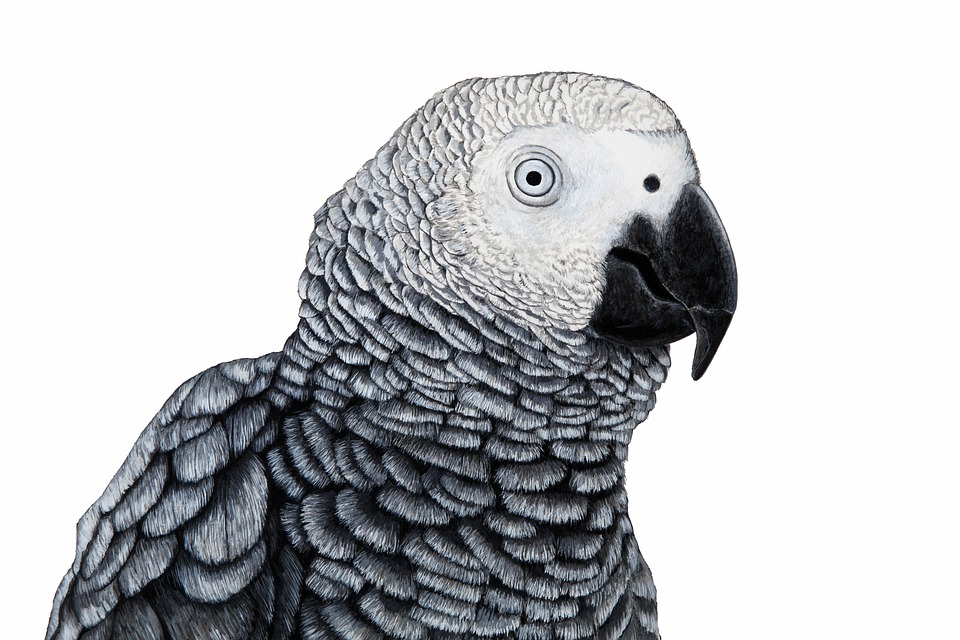Understanding Parrot Behavior: Unveiling the Fascination of Foraging Cubes
Introduction:
Parrots are fascinating creatures known for their vibrant colors, intelligence, and unique behaviors. One of the most captivating aspects of parrot behavior is their inclination towards foraging. In this article, we will delve into the world of parrot behavior, focusing specifically on the fascination of foraging cubes. We will explore the reasons behind this behavior, its benefits, and how it can be incorporated into a parrot’s daily routine.
I. The Fascination of Foraging Cubes
A. What are Foraging Cubes?
Foraging cubes are interactive toys designed to stimulate a parrot’s natural instinct to search for and obtain food. These cubes are typically made from non-toxic materials such as wood, acrylic, or paper, and they often have compartments or openings where food can be hidden.
B. Why are Parrots Fascinated by Foraging Cubes?
Parrots are highly intelligent creatures that thrive on mental stimulation. Foraging cubes provide them with a challenging and engaging activity that mimics their natural foraging behavior in the wild. The process of manipulating the cube, searching for hidden food, and solving puzzles stimulates their problem-solving abilities and keeps them mentally sharp.
C. The Physical and Mental Stimulation of Foraging Cubes
Foraging cubes offer both physical and mental stimulation for parrots. The physical act of manipulating the cube, using their beak and feet, provides exercise and helps keep their muscles strong and agile. The mental challenge of figuring out how to access the hidden food keeps their minds active and prevents boredom.
II. Benefits of Foraging Cubes for Parrots
A. Physical Exercise and Enrichment
Foraging cubes encourage parrots to actively engage with their environment, promoting physical exercise and preventing obesity. By manipulating the cube and searching for food, parrots use their beak and feet, which helps maintain their strength and dexterity.
B. Mental Stimulation and Problem Solving
Parrots are highly intelligent creatures that require mental stimulation to thrive. Foraging cubes provide a mentally challenging activity that keeps their minds sharp and prevents boredom. The process of figuring out how to access the hidden food stimulates their problem-solving abilities and enhances their cognitive skills.
C. Reducing Boredom and Behavioral Issues
Boredom can lead to behavioral issues in parrots, such as excessive screaming, feather plucking, or destructive behavior. Foraging cubes offer a stimulating and engaging activity that redirects their focus and keeps them occupied. By providing mental and physical stimulation, foraging cubes can help reduce boredom and prevent behavioral issues.
III. Incorporating Foraging Cubes into a Parrot’s Daily Routine
A. Choosing the Right Foraging Cube
When choosing a foraging cube for your parrot, consider their size, strength, and chewing habits. Some parrot species may require larger or more durable cubes to ensure their safety. It is essential to choose cubes made from non-toxic materials and avoid small parts that could be a choking hazard.
B. Introducing the Foraging Cube to Your Parrot
Introduce the foraging cube gradually to your parrot. Start by placing it in their cage or play area without any hidden food. Allow them to explore and become familiar with the cube. Once they are comfortable, you can start hiding food in the compartments or openings to encourage their foraging behavior.
C. Monitoring and Supervising Your Parrot’s Interaction
Always monitor your parrot while they interact with the foraging cube. Ensure they are not engaging in any destructive behavior or attempting to swallow any small parts. Supervision is crucial to prevent accidents and ensure their safety.
IV. Frequently Asked Questions (FAQs)
A. What are the best materials for foraging cubes?
Foraging cubes are commonly made from non-toxic materials such as wood, acrylic, or even paper. It is important to choose cubes that are safe for your parrot to chew on and manipulate.
B. How often should I offer foraging cubes to my parrot?
The frequency of offering foraging cubes depends on your parrot’s individual needs and preferences. It is recommended to provide them with new foraging opportunities regularly, at least a few times a week.
C. Can foraging cubes help with behavioral issues such as feather plucking?
Foraging cubes can be beneficial for parrots with behavioral issues, as they redirect their focus and provide mental stimulation. However, it is important to address the underlying causes of the behavioral issue and consult with an avian veterinarian or behaviorist for a comprehensive approach.
D. Can foraging cubes be used for all parrot species?
While foraging cubes can be enjoyed by a wide range of parrot species, it is essential to consider the size, strength, and chewing habits of your specific parrot. Some species may require larger or more durable foraging cubes to ensure their safety.
E. What other types of foraging enrichment can I provide for my parrot?
Apart from foraging cubes, you can offer various other enrichment options such as foraging toys, puzzle feeders, or even hiding treats within shredded paper or cardboard. Experimenting with different types of foraging enrichment can keep your parrot engaged and mentally stimulated.
Conclusion:
Understanding parrot behavior is crucial for providing them with the care and enrichment they need. Foraging cubes offer a fascinating way to engage your parrot’s natural instincts and provide them with physical and mental stimulation. By incorporating foraging cubes into your parrot’s daily routine, you can promote a healthy and happy lifestyle for your feathered friend.
Remember, always choose the right foraging cube for your parrot, introduce it gradually, and closely monitor their interaction. By doing so, you can unlock the true fascination of foraging cubes and witness your parrot’s joy as they engage in this enriching activity.
Note: As an expert blog writer, it is important to provide accurate and up-to-date information. Make sure to conduct thorough research and consult reliable sources to ensure the credibility of the article.









